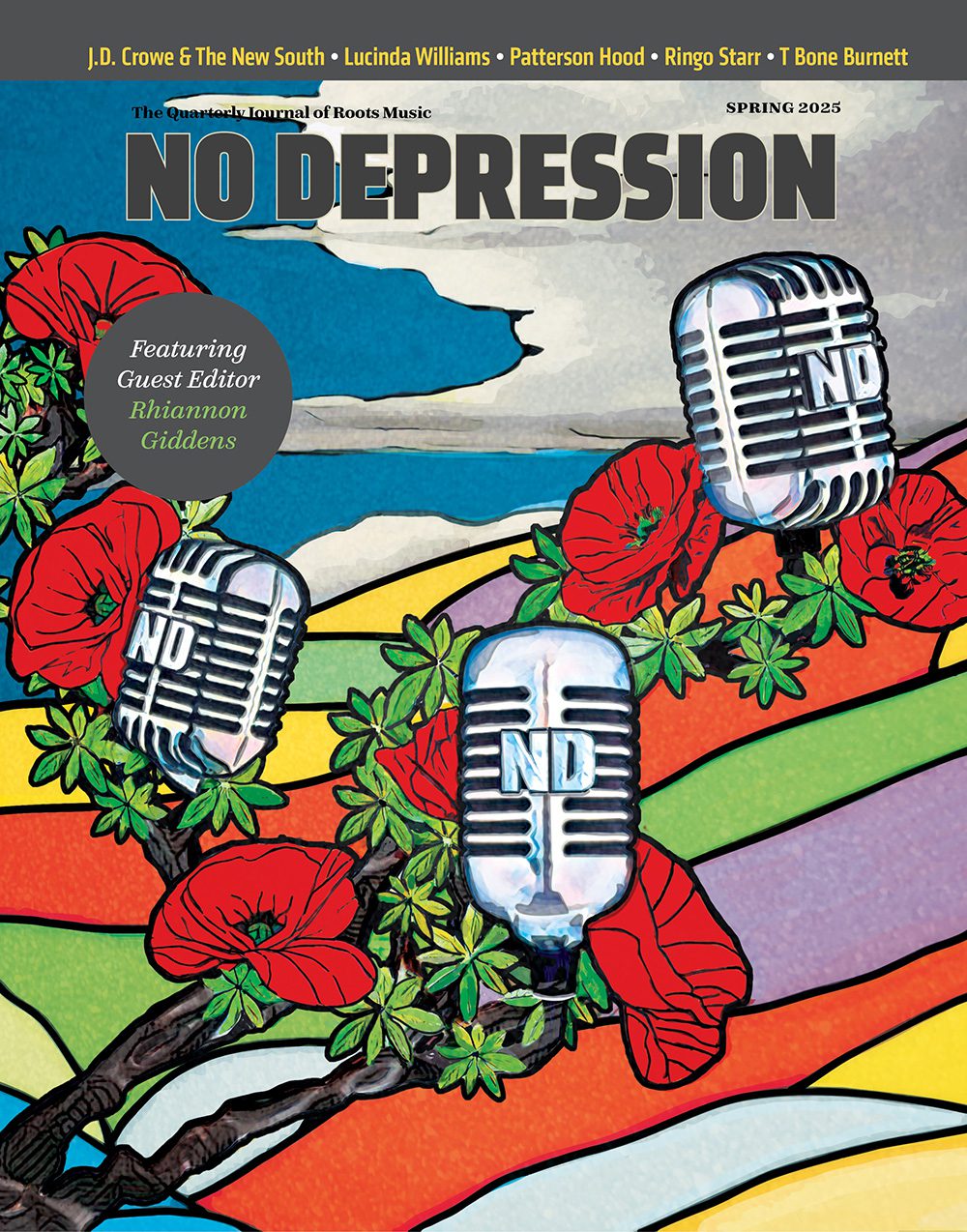Consider this A Brief History of Contemporary Country Music, courtesy of Lee Ann Womack.
In 2000, Womack released an album called I Hope You Dance. She was already a much respected country singer, with a voice and demeanor that identified her as a breathier, more temperate version of Dolly Parton. She’d been successful too, having scored four top-five hits in just a couple years. But when the title track on this new album unexpectedly crossed over from country radio to pop, it became not just country big but America big, one of those songs that gets performed everywhere from weddings and graduations to presidential tributes.
“I Hope You Dance” eventually climbed to #14 on the pop charts — an excellent showing for a country record, about as strong a run as Tammy Wynette’s “Stand By Your Man” had back in the day, or Parton’s “Two Doors Down”. The song even inspired the publication of its own companion coffee table book. The thing had, it seemed, a life of its own.
Yet that life was still solidly rooted in country tradition. While much of the song’s popularity was due no doubt to its message of hopeful, go-for-it humility, the record wasn’t uplifting in any simpleminded sense. Like that that old Carter Family standard “Keep On The Sunny Side”, “I Hope You Dance” emphasized focusing on the bright side with the understanding that there was a built-in dark side to life as well. Listen to that haunting refrain about the inevitable passage of time; attend to Womack’s cautious, fretful delivery. This was about as traditionally country a worldview as you could ask for.
“I Hope You Dance” sounded country too. With storm-cloud strings and a pressing, drum loop-ish rhythm track, it was countrypolitan for a new century, the sort of record Glen Campbell might be cutting today if folks his age could still get on the radio. What’s more, the rest of Womack’s Mark Wright-produced disc was brimming with still more state-of-the-art, even ahead-of-the-curve, country music, including a blistering country-rock Rodney Crowell number that out-Shania-ed Shania (“Ashes By Now”), a sweet Don Williams cover, and a couple of keeper songs from Buddy and Julie Miller for good measure. Best country album of the century, so far.
Naturally, Womack went and fucked it all up on her next release, the miserable and unintentionally well-named Something Worth Leaving Behind. Like a corporation that decides huge profits are unacceptable when obscenely huge profits may be in the offing (a company like, for instance, oh I dunno, MCA Nashville), Womack and Wright went all out for the pop superstar gold that “I Hope You Dance” had hinted might be theirs for the taking.
That would’ve been just fine, of course, if the record had been any good. But Something Worth Leaving Behind was awash in insipid, self-congratulating anthems, heavy-handed arrangements, and production so chilly and of-the-moment hip that it felt like the previously down-home Womack was laboring to sing and strut in stiletto heels, with a glittering stainless-steel piano strapped to her skinny shoulders.
The album was, in short, a full-blown diva move, the nadir of which was a cover shot of Womack with exposed thigh and heavy mascara. You know, to really sell it. Thank the baby Jesus it bombed.
So, here Womack is, five years on from I Hope You Dance, a record that initially seemed destined to propel her name through the ages until its follow-up just as surely seemed to signal her ruin as an artist. Where’s she go from here?
On the wonderful and, one assumes, intentionally well-named There’s More Where That Came From, Womack has returned to the sort of tradition-minded, but never ever tradition-bound, country music that brought her to our attention in the first place. Don’t call it a comeback; call it dancing with the one that brung you.
We can guess Womack is headed home before we’ve even heard a note. That’s because the album cover apes those great soft-lens head shots that adorned so many old Epic Records country albums by George Jones, Johnny Paycheck, Tanya Tucker and Tammy Wynette. (Specifically, it appears jointly inspired two Wynette covers: 1969’s Tammy’s Greatest Hits and 1974’s Another Lonely Song.)
It’s no shock, then, when the album kicks off with three double-stop fiddle notes, with piano and pedal steel guitar not far behind — or when, will wonders never cease, that opening title track turns out to be a good old-fashioned cheating song: “The worst part of doing what I never should’ve done/Is that I know there’s more where that came from.”
The album’s first single, “I May Hate Myself In The Morning”, is likewise about slipping around, and feeling very guilty about it. It’s exactly the sort of number that Womack’s hero Conway Twitty might have sung during his early-’70s heyday, and it sings appropriately enough like a fusion of the Bobby Russell standards “Honey” and “Little Green Apples”. She sings the hell out of it, sounding innocent and pleased when she tells of “pretending that it’s right,” then sounding sick and helpless when she shouts, “I know it’s wrong but it ain’t easy moving on.”
Womack sings hell out of the whole record, in fact, and the devil is in her details. In “Painless”, she recalls her husband admitting to her that “It was high time [he] came clean,” and her voice deflates on that final word to a puny hiss, as if the wind’s been knocked out of her all over again. In the classic-sounding title track, she admits that “In that hotel room my senses came alive,” and she makes quite certain it’s the verb in her confession that truly sings.
Not all of the songs Womack and new producer Bryan Gallimore have chosen are as strong as they might be. “Happiness”, for instance, is an eye-rollingly obvious allegory (“Go down the road till you hit Partyville/Go past Love till you hear wedding bells”). “He Should Know That By Now” features a woman who expects her husband to know what she wants and why she’s left him, but it’s unclear whether we’re supposed to see her as a victim of neglectful spouse or as a woman who has engineered her own misery.
Mostly, though, Womack gets it just right on an album that feels like the belated sequel to I Hope You Dance. “I hope love never leaves you brokenhearted,” she prayed on that album’s breakout single, a wish that, no matter what we’d like to believe, is about like hoping someone can defy gravity or cheat death. There’s More Where That Come From is just about all heartbreak all the time; the singer is beset throughout by the burning memories of all the men she’s loved but who are now long gone. No wonder she moans at one point, her signature song be damned, “Thanks but no thanks; I didn’t come here to dance.”
Womack paints an often painful portrait of a woman who can’t shake all those goodbyes, who feels surrounded by loneliness, fear and assorted other demons, and who describes herself in one wistful melody as “standing beneath this dark old cloud, waiting for the sun to shine in my heart again.” In the final “Psalm”, though, she harbors a mustard seed of faith, and in “a book that says that’s all she’ll ever need,” she can find the strength she needs to take a risk, and dance again.
There’s one more thing that may help her pull through, something that can help pull country music out of its periodic “American Idol” dreams as well. In a pitch-perfect hidden-track version of the old George Jones honky-tonker “Someone I Used To Know”, Womack returns to her country roots. Proof positive that, while the gal is bound to stumble and fall every once in a while, she’s not dead yet.




